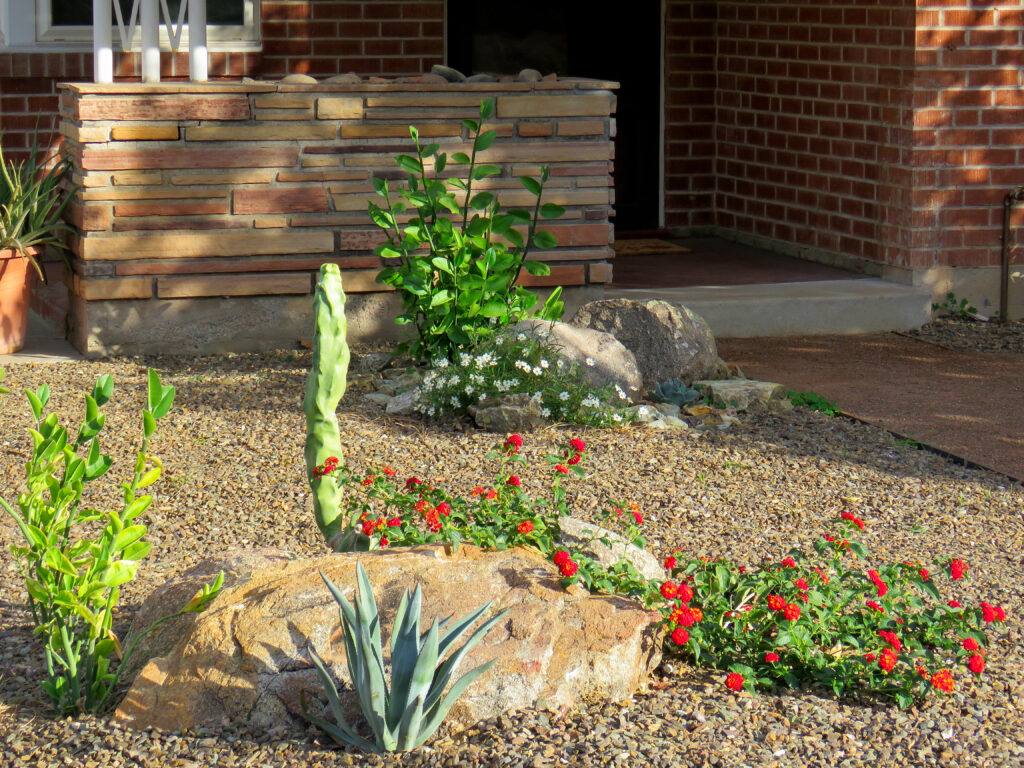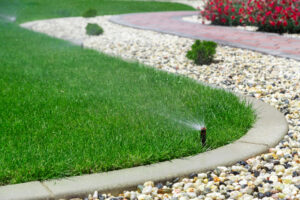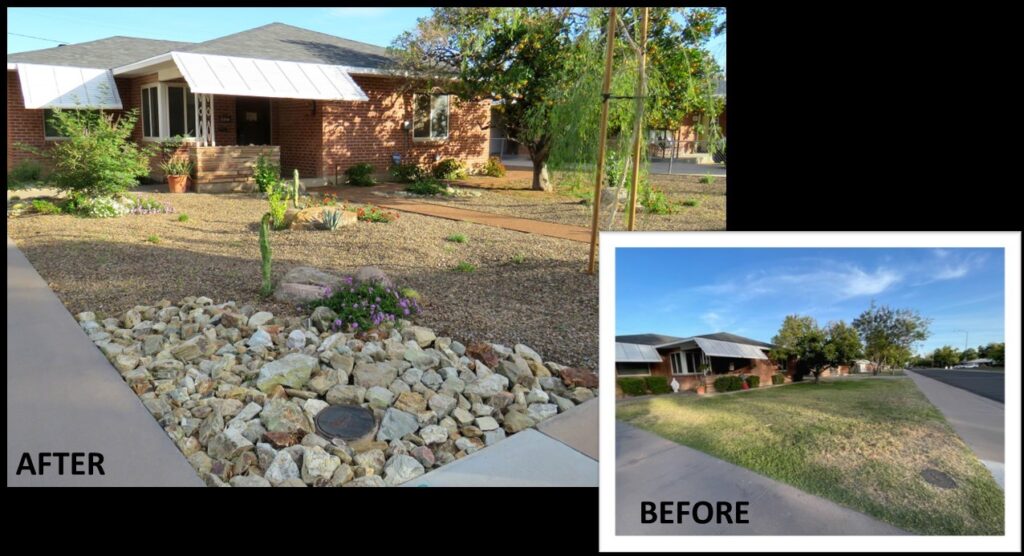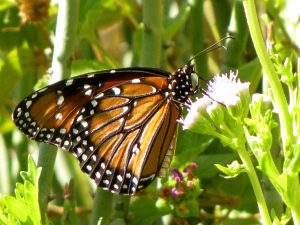CONSIDER A CONVERSION
This post was updated Feb. 4, 2025
Keeping a green, attractive lawn isn’t a simple task in the low desert. Grass doesn’t just grow where there is bare ground. You have to water it, feed it, aerate it, and then there’s the mowing, blowing, edging, and dethatching to do. And, the typical conversion to a Xeriscape can save 50% or more on your outdoor water use.
Understandably, taking out unused grass areas can be a big decision for homeowners, businesses, and communities. But, don’t be concerned that Xeriscape is just rocks and cacti. There are hundreds of varieties of low-water-use plants that bring color, beauty, and function to the landscape. Xeriscape is common-sense landscaping that incorporates principles such as good planning and design, selecting well-adapted plants, installing efficient irrigation, using water-saving mulches, and more.
If you’re fed up with the time, effort, and excessive water usage for maintaining a grassy yard, it’s time to transform your outdoor space into a colorful Xeriscape. And, many water providers are offering incentives and rebates to do so for both residential and commercial properties (learn more below).
Keep reading to learn important steps to consider and to discover great resources to tap into.
Xeriscape (pronounced zeer-a-scape) is defined as landscape design with water in mind.
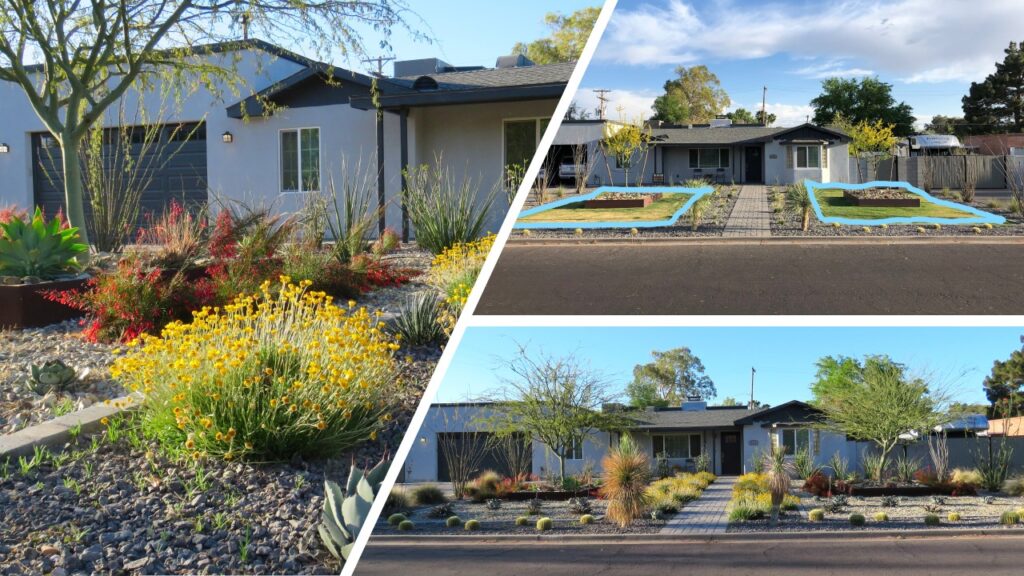
HAVE A PLAN
Before removing the grass, it’s a good idea to have a follow-up design. Your first step is to evaluate your site. Create a sketch of your lot showing your house, utility lines, and existing plants. Avoid installing plants too close to each other and too close to buildings, power lines and other problem areas.
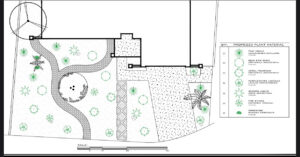
Consider what changes you would like to make as you plan the new design. With the beautiful weather that we enjoy throughout the year, outdoor space should be an extension of the home. Think about what function your landscape could have. Will you be bird watching, sun bathing or entertaining? Do you need more shade, screening for privacy, or do you want to create a landscape that will attract wildlife?
Add dimension to the yard. Creating contours in your landscape not only adds interest to the landscape, but it also captures rainfall. Don’t make mounds greater than 1′ in height or it may look unnatural. The mounds should be irregular in shape, not perfectly symmetrical and sloped. Create swales (low spots) to capture water, and direct it to the plants instead of down the street.
Don’t forget the hardscape. Hardscapes are features such as patios, walkways, benches, walls, or boulders. These can accent the landscape and increase its functionality.
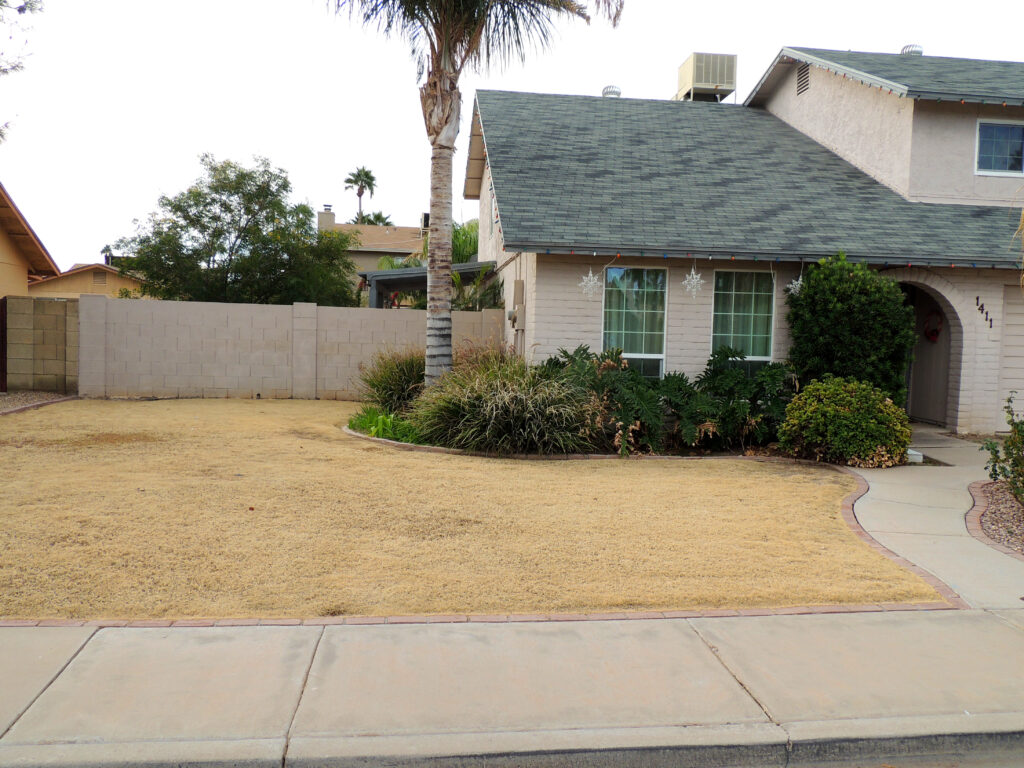
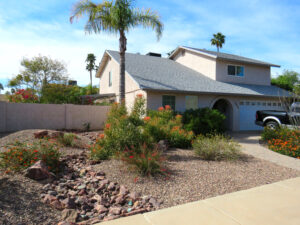
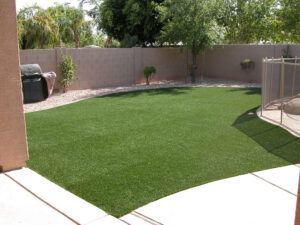
Planning and design tips to consider
For some inspiration, visit our Planning & Design page. Our partner, the City of Scottsdale, also offers their Residential Landscape Revitalization Workbook that offers great ideas and sample plans.
If all this information about designing has you overwhelmed, check with your city’s water conservation office (see our Water – Use It Wisely calendar for a listing of our partner workshops). Desert Botanical Garden and the Maricopa County Cooperative Extension Master Gardeners also offer educational programs. If you’re still not comfortable with the do-it-yourself approach, consider hiring a landscape architect or landscape designer.
Artificial Turf for Replacement: If you’re thinking of replacing your grass with artificial turf, please read our 10 Reasons Why Artificial Turf May Not Be What You’re Looking For.
Xeriscape can save 50% or more on your outdoor water use.
REMOVING THE TURF
Bermudagrass can be challenging to remove. Below, we provide both chemical and physical methods. This step could also be contracted out to a landscape professional if you prefer.
Chemical treatment
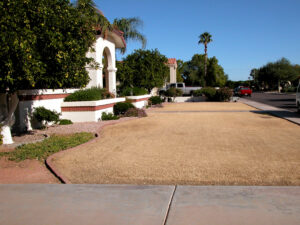
An herbicide with glyphosate as the active ingredient can help you to eliminate your bermudagrass (see caution heading below). Glyphosate is a systemic herbicide, meaning that it gets transported throughout the plant and will eventually kill the entire plant, including the stolons, rhizomes, and roots. Grass absorbs the chemical and moves it throughout the plant more efficiently when it is growing well and is not under stress. Glyphosate will not affect nearby untreated plants and will not remain active in the soil, so replanting can immediately follow.
The following steps should successfully remove bermudagrass with chemical treatment:
- Water sufficiently to “green it up” and allow it to grow a little longer than normal.
- Spray with a glyphosate-type herbicide at the recommended dosage early on a calm day. (Do not spray on any desirable plants).
- Give the herbicide a week to 14 days to work, then water the grass again to encourage any remaining sprouts.
- Spot spray any new growth.
- Scalp the grass close to the ground, or rototill or pick-ax the area and rake out any remaining plant material.
Caution
There have been a lot of concerns noted recently about the use of herbicides that contain glyphosate. That said, it is still one of the most effective methods for bermudagrass removal. Be careful when purchasing an herbicide to use at your home. In this case, we encourage extra caution as brand-name products (like Roundup and Kleenup, for example) have changed the active ingredients in their products. Be sure to look at the fine print on the product for the ‘active ingredients’ list to ensure that glyphosate is the only ‘active’ ingredient in the product. Once selected, but sure to use the product as directed, and to use personal protection when applying. Learn more in this cooperative extension publication, How to Eliminate a Bermudagrass Lawn Using Glyphosate.
Alternatives to chemical treatment
Remember that bermudagrass is invasive and very persistent. Other methods such as solarizing, vinegar sprays, smothering, digging out, tilling or use of sod cutters may be more difficult and have a lower success rate. Some of these methods may be more effective when used together. The following methods will require some work:
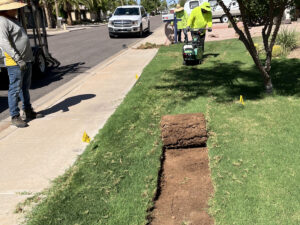
- Use a rototiller or pick-ax and rake to loosen the top 6 to 12 inches of soil and remove the stolons (or dispose of the entire layer including the soil). You’ll probably have to repeat the digging and sifting.
- Some have used a method of solarizing the area with clear plastic during the summer.
- A sod-cutter works very well. They can be rented at most rental yards or home improvement stores.
Turf removal tips to consider
- Neglecting or turning off the water to your lawn is not a good way to kill the grass. Bermuda has a very deeply rooted system and can continue to live for years in a drought-dormant state. It might appear to die, but once a good monsoon rain hits, it will sprout back to life.
- Just covering the grass with black plastic sheeting and topping it with granite is not recommended as a method to kill or control the grass. The plastic eventually breaks down and tears, leaving the landscape unsightly and difficult to clean up. And weeds will sprout either through the tears or even on the surface granite. Also, some rebate or incentive programs don’t allow it to qualify.
RENOVATE YOUR IRRIGATION SYSTEM
You may decide to install a new irrigation system or retrofit the existing system. If your existing system is old, consider abandonment. Either leave it in the ground or remove it. Call a landscape professional or visit an irrigation supplier for specific information. Using the appropriate adaptors, you may be able to convert your lawn sprinklers to a drip system.
PLANT IT AND MULCH IT
Install the plants you selected during the planning stages. Cover the root balls and surrounding soil with organic mulch, being careful not to place the mulch too close to the trunk or stem of the plant. Then top with 2 to 4 inches of granite or rock mulch if you prefer for the aesthetics. For the remainder of the landscape areas, granite provides the greatest flexibility in color, appearance, and functionality. When selecting granite, neutral or desert tones provide a more natural look for your landscape and will reduce possible problems with heat reflection (typical of light colors) and heat retention (typical of dark colors).
When selecting granite, check for the several sizes available, and the option of screened and non-screened. Non-screened has the fine particles included that help to stabilize the granite. Quarter-inch non-screened granite (1/4″ minus) works well on pathways, one-half inch non-screened granite (1/2″ minus) works well around plants. Using more than one size in the landscape can add interest and define the spaces, but just be sure to match the color. We caution against using screened granite as it doesn’t lock into place and is more difficult to walk on.
ENJOY IT
It’s payback time! Enjoy the changes in your landscape as different plants come into bloom throughout the year. Watch as the birds and butterflies frequent your yard to feed or nest. Do a bit of pruning and raking to keep things tidy, and make it look rigorous once in a while so that your lawn-mowing neighbors don’t feel so bad.
Look for Incentives and Classes
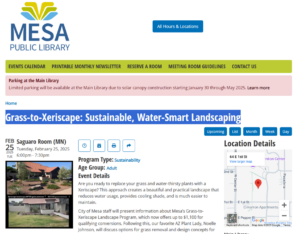
Many of the Arizona water providers offer assistance to their water customers by offering classes, incentives, or rebates. Incentive amounts can vary from a few hundred dollars up to $5,000 depending on your municipality and how much grass you are removing. Contact your water provider for details.
Find great classes on landscape topics offered by our Water – Use It Wisely partners on our Calendar. In fact, the City of Mesa offers a workshop on Tuesday, February 25, 2025 from 6-7:30 p.m. at Mesa Main Library. Join us for Grass-to-Xeriscape: Sustainable, Water-Smart Landscaping, led by the entertaining Noelle Johnson, also known as AZ Plant Lady. She’ll guide you step-by-step on how to transform your landscape and qualify for up to $1,100 through Mesa’s program!
Note: Generous incentives are also available for commercial projects, businesses, and HOA’s.
Learn More
- Check out our Drab-to-Fab Video Series
- Good Reasons To Take Out Your Grass
- Top 10 Reasons to Convert to Xeriscape
Donna DiFrancesco is a conservation coordinator and horticulturist with the City of Mesa, AZ, one of 21 Water – Use It Wisely partners to offer water-saving advice and programs.


